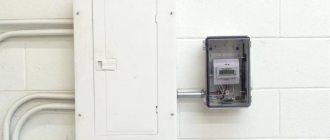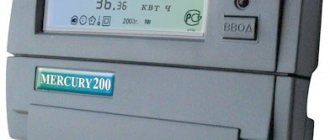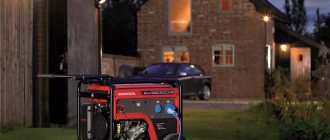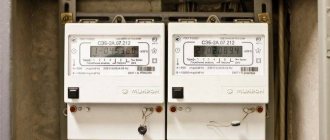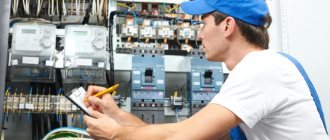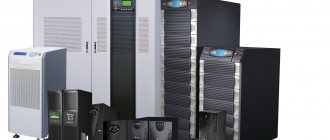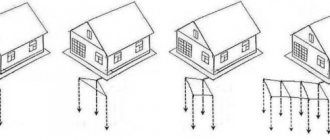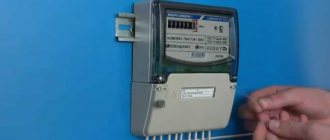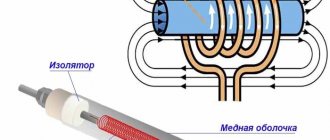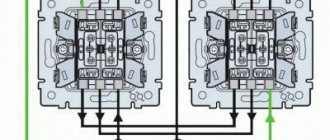- August 23, 2020
- Tools and equipment
- Daria Mingilevich
The concept of three-phase connection is not only found in industrial halls. We are increasingly encountering this in new buildings and even in old houses, if the electrical installation allows. This makes it possible to use devices with higher energy requirements, and a three-phase electricity meter becomes necessary.
In today's article we will look at how to choose a three-phase meter for your own home, apartment or other premises. We will also get acquainted with several options for popular counters.
In homes with high energy consumption
The device is also used in households. There are more and more electrical devices in our homes, which usually have a fairly high demand for electricity. This type of device is suitable if our electrical installation is adapted to this type of connection and we want to simultaneously use:
- electric heating;
- induction cooker;
- air conditioning system;
- Lots of small household appliances and electronics.
For induction cookers, it is recommended to use a three-phase network and, accordingly, a three-phase electricity meter.
How does a three-phase meter work?
First of all, let's find out the principle of operation and which three-phase meter to choose for a private home.
The operating principle of a three-phase energy meter is almost the same as for models adapted to 1 phase. The device takes measurements for each cable separately, although we can see the total on the screen. These are really three 1-phase meters integrated in one housing. Most often we come across electronic devices that have special integrated circuits. When exposed to current flow, they generate measurable pulses, which we interpret as kWh consumed.
Is it worth giving up?
According to legal regulations, electricity meters are placed outside only with the consent of the owner. The basis for submission to the SNT may be a collective decision made at a general meeting.
Initially, many may perceive such an innovation critically, fearing for the safety of their property. But you also need to take into account the benefits that a change in the location of the device will provide. The controller will no longer bother you with monthly visits.
The indicator data will be sent to the settlement center on time, this eliminates the accrual of penalties and fines, and the occurrence of any misunderstandings. The device is reliably protected by a special shield against hacking and theft. For SNT members, such placement of the meter can also have significant advantages.
Is unbalanced meter load a problem?
We often wonder how the asymmetric load on the wires affects the accuracy of the readings, and also which three-phase meter to choose for a private home. Let's imagine a situation in which electric heating is connected to one phase, an induction cooker is connected to another, and the third phase is responsible for the remaining small household appliances. In summer we do not heat the room, so one phase is completely unloaded. Does this affect the measurements taken? A very similar problem is the operation of a device with only one or two phases connected.
Fortunately, electronic electricity meters are excellent at dealing with such problems. We don't need to have a symmetrical load or even all phases connected to the device. This is due to the meter design. Each phase is measured completely separately, and the zero measurement is simply added to the non-zero value and displayed on the LCD screen.
Why is it not profitable to install a meter on poles?
- Indoors, without exposure to cold or hot air, the device gives more accurate readings. The error of street meters, compared to home ones, can reach 10%. Considering the high cost of electricity for consumers, the amount to pay for electricity increases significantly.
- A meter that was installed on a pole will fail faster and will last a shorter time.
- Dust, humid air, wind, hail - all these natural factors cannot but affect the operation of the device. With this arrangement, electricity meters more often require repairs, and the accuracy of the indicators is often lost.
- When the meter is installed on the street, it needs to be monitored . After all, even from hooligan motives, someone can damage the device, and theft is not excluded, despite reliable fastening and connection to the electrical network.
- Energy companies force people to install electricity meters on the street, often counting on additional profits. After all, if the meter breaks down or completely fails, the consumer needs to pay for a new control device, a new installation, a new seal.
- Also interested in the fact that electricity meters in the sector of private houses, dachas, and garden plots are located on transmission line supports are also those companies that sell meters and check them.
There are many reasons for concern among owners of plots in holiday villages, gardening partnerships, and in the private sector. And therefore the question is whether the requirement to move the electric meter outside the house and even the yard is legal.
Is the phase connection order important?
The instructions included with the electronic electricity meter clearly indicate that the manufacturers recommend connecting the phases in a specific order. This has to do with diagrams. However, if it turns out that they are not connected correctly, you must call an authorized power plant employee if the meter belongs to him. In the case of a submeter, a qualified electrician must be called.
If you have a modern electricity meter, the LCD will most likely show a message indicating an incorrect phase connection. Some models will indicate this situation by flashing or turning on an LED. In this case, the cables must be swapped so that the device can work. Depending on whose property the meter is, you must call the power company or an electrician with the appropriate permit.
Is it possible to refuse
ATTENTION! The energy company's requirement to move the meter outside violates the laws and regulations for the installation and operation of such devices.
Members of the partnership, faced with such intentions of the supplier, must write an official refusal to change the location of electricity meters. But perhaps such a solution will suit them better, in which case a meeting is held and a resolution is approved to move the devices to poles throughout the SNT.
Problem with old meters
Problems with measuring electricity consumption may arise if you have an old-style three-phase electricity meter (inductive). In such situations, a countdown is often observed. For proper operation it is necessary to change the phase connection. You also need to understand which three-phase meter to choose for a private home if it is replaced.
When it happens that when you start one of your household electrical appliances, your fuses turn off, this means that the electrical installation is overloaded. This is for your own safety. To be able to use any number of devices without any obstacles, you must ask the energy company that supports you to check the connection capacity and increase it accordingly.
If you only have one phase, it's worth finding out whether the specifications allow you to change the connection to three-phase. You can also easily find out if you are using it anymore. Just check if the meter in your apartment is three-phase.
Where should the meter be located on the street?
If you nevertheless decide to listen to the wishes of the energy supply organization or the administration of the gardening partnership and move the meter, remember that hanging it on the nearest pole will not work. There are special accommodation requirements that must be met.
So, you can install the meter in a special insulating panel on the facade of the building from the outside or on a special, free-standing support. It should be located at a height of 0.8 to 1.7 m from the ground so that the instrument readings are easily visible. In addition, you can hang the meter on a pole (light pole), but only if it is located on your property.
Remember that the requirement to place the meter off-site is illegal, since you will not be able to control the connections and condition of the device itself.
Review of popular models for a private home
A 3-phase electric meter is more expensive than similar single-phase devices. However, it gives you much more options. Therefore, there is a huge problem when it comes to the question of which three-phase meter to choose for a private home. We present popular models that you can buy alone or get from your electricity supply company.
Let's look at popular models of three-phase meters.
Zemel 16EC3gw
Basic model that works well in a four-wire network. This is an excellent three-phase electricity meter for a private home. Its features:
- multi-zone active energy measurement;
- time zone control;
- indication of external magnetic field;
- alarm failure.
This model is suitable for use as an electric meter if, for example, two families live in the same house. As you can see, you don’t need to make a lot of effort to choose a three-phase meter for a private home.
How to set your energy supplier on the right path
Congratulations! Finally, a brand new multi-tariff meter was purchased and installed. All according to company requirements and safety rules. However, you still have your old electricity meter in your hands. Do not unplug it under any circumstances. Many suppliers often make mistakes when billing for energy consumption, and in most cases this does not benefit the consumer. Therefore, the old meter can perfectly serve as an additional electricity meter.
To do this, it is necessary to keep electricity metering logs, both external and internal. In case of unreasonable questions from the company, this can work to your advantage. Know that if power engineers are aware that their activities are monitored, then the bills they issue will increasingly coincide with your calculations. In addition, an unsealed device will help optimize energy costs in the house by identifying areas of irrational use of electricity.
Bemko A30-EM3-L
Today, finding a meter on the domestic market is a big problem. When deciding which electricity meter to choose for a private home, it is good to choose the Bemko A30-EM3-L.
This is a slightly more expensive model, equipped with an LED display and three diodes indicating current measurement in all three phases. An accuracy of 0.01 kWh allows accurate measurement of energy consumption. The device operates on a four-wire network. The maximum load is up to 100 A. So this is one of the acceptable options for three-phase meters for a private home.
PAC2200
The PAC2200 is a good option. This is a smart energy meter from the well-known Siemens company, which is used both in infrastructure and in industry. The device measures all basic electrical quantities: voltages, currents, power and energy. The modular design and DIN rail mountability allow it to be used in areas where space is limited, such as drain boxes. The built-in Ethernet or RS485 communication port allows flexible adaptation of the network structure to the user's needs.
Advantages:
- Compact design - DIN rail mounting allows the meter to be installed in areas with limited space, such as drain boxes.
- Convenient connection diagram for a three-phase meter in a private house.
- Built-in Communications - The PAC2200 energy meter has a built-in Ethernet (Modbus TCP/IP) or RS485 (Modbus RTU) communications port. This functionality allows the device to be integrated with superior systems such as Powerconfig or Powermanager.
- Embedded Web Server - The PAC2200 with Ethernet connectivity allows you to remotely view measured parameters from each network access point using a standard web browser. This feature allows you to view both current and historical data (for example, energy consumption on certain days of the week) without the need for additional software. You can also view parameters measured on mobile devices, phone or tablet.
- Built-in memory - the PAC2200 energy meter archives energy measurement data. Thanks to this, the user can easily check the energy consumption measured by the meter, for example on individual days of the week. Using this functionality is an alternative to a full energy management system.
- Integration with EMS Powermanager - SENTRON Powermanager energy management system has built-in libraries for working with PAC2200 meters, making the integration of meters in this application very simple and can be limited to setting the IP address of the device.
Installation Rules
Typically, electricity meters are placed on poles or on the external wall of a house in the private sector, in a holiday village, or on the territory of gardening associations . With this arrangement, the inspector has constant access to the indicators, regardless of whether there is anyone in the house at the time of his arrival.
Despite the fact that it is recommended to install a meter of this type indoors with low humidity and a fairly warm temperature, it is also practiced to install it outdoors, on a wall or on a power line support. What are the rules for such an installation:
- There must be at least 25 meters from the installation site to the input module.
- If the meter hangs on a pole above the road, the distance from it to the ground should be at least 6 meters, if above the sidewalk - at least 3 meters.
- A special mount is provided for installation; external insulation is also used to protect the electric meter from external factors.
- The meter is installed in a special box (case) made of metal or plastic.
There are also additional requirements that ensure the safety of the installed device; only a qualified, experienced specialist can perform installation work in compliance with them.
IMPORTANT! The transfer of the meter is carried out only with permission from the energy company.
Price
What about the price of a new meter? Much depends on what device the buyer chooses. Of course, meters designed for a single-phase network are cheaper, and those adapted for a three-phase network are more expensive. You can also notice a strong difference between induction and electronic models - the latter are also more expensive.
What three-phase meter is needed for a private home? There are plenty of options, but if you are not sure that you have enough knowledge, consult with a specialist. The minimum amount that will need to be paid for a three-phase meter is 1,000 rubles. For more expensive models you will have to pay a much larger amount. However, in order not to overpay, it is better to call a specialist to your home. He will be able to name the appropriate amount and suggest parameters for choosing a counter. You should not buy a three-phase meter blindly, as there is a huge risk of losing money.
How to connect a three-phase meter in a private house or apartment?
This question, like the question of checking the correct operation of the meter, requires an accurate answer. To properly connect the electricity meter, you must contact the appropriate energy company, who will send a qualified employee to you. Each such device must have an inspection stamp indicating when it was last checked. A power plant employee will install the seal.
We must also not forget that you should immediately contact the relevant energy supplier after connecting the meter in order to sign a contract for the supply of energy on the terms previously agreed with the company representative. The contract should include information about whether you have access to single-phase or three-phase electricity and whether you will be billed under a single or dual tariff system. This is a very important step, because most companies only issue a preliminary agreement before connecting the meter. Of course, this document is in no way binding and you may be held liable for using electricity from an illegal power source and without a valid contract with the supplier.
Which electric meter to install: pitfalls
There are several types of counters:
- Single tariff is the simplest and cheapest option.
- Multi-tariff without remote data collection.
- Multi-tariff with options for remote checking of readings.
All these options have their own disadvantages and advantages; it’s up to you to decide which one to choose.
Under no circumstances should you give in to the company’s persuasion to install a certain type of meter, for example with remote monitoring - they say that they only work with these. It is not true! You have the right to install any of them. However, keep in mind that if you install a single-tariff meter, when you change the tariff you will have to change the device itself. So it’s better to immediately install a multi-tariff meter. Yes, you will have to overpay, but the future savings are obvious.
